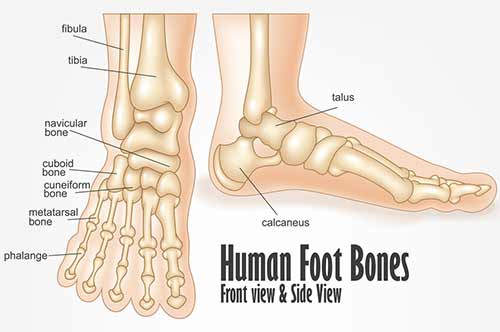The human foot and ankle contains about 26 bones that provide structural support. Together the skeleton of the foot and ankle not only provide strength to carry our bodies, they also withstand additional forces from the many activities we engage in, such as standing, running, and jumping.
But occasionally, the forces placed on our foot bones may be significant enough to cause a fracture, or break, in one of the bones. Such fractures can be a result of sudden injury, or due to repeated stress as in the case of stress fractures.

Some of the more common types of fracture injuries that occur in the foot and ankle are listed below. Simply click on the relevant link for more information.
- Stress fracture (including Jones fracture)
- Ankle (talus) fracture
- Heel (calcaneus) fracture
- Toe fracture
- Navicular fracture
- Lisfranc fracture
All fracture injuries should be evaluated to ensure appropriate treatment. Imaging may be required to confirm and assess the extent of the fracture. Depending on the nature of the fracture, treatment often includes an initial period of immobilisation followed by gradually progressive exercises to regain mobility and strength to the affected area.
If you suspect you have sustained a fracture to a bone in your foot or ankle, review by a Podiatrist for further assessment and advice is recommended.





